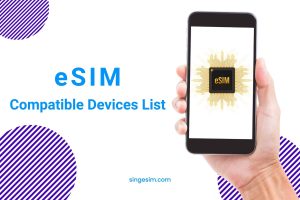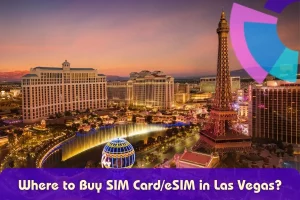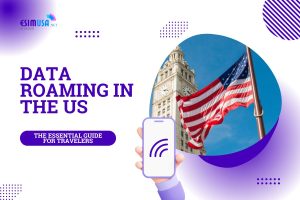Staying connected while traveling is important for both peace of mind and practicality. Whether exploring a new city in the United States or abroad, having a reliable mobile internet solution allows tourists to keep in touch with friends and family back home.
This guide provides an overview of the top internet options available for travelers in the US, helping you choose the best plan for your needs and budget no matter where your adventures may take you.
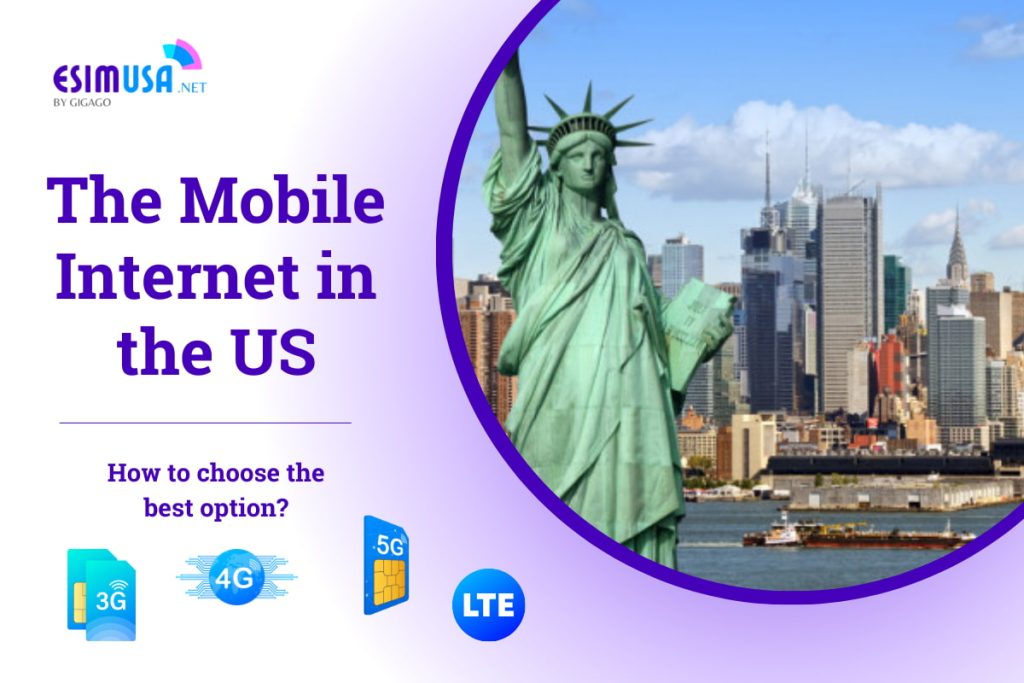
Table of Contents
I. Mobile Internet in the US – Coverage and Speed
1. Mobile Internet Coverage
Mobile internet coverage in the United States has expanded rapidly in recent years thanks to investments from the major carriers. However, availability can still vary significantly depending on location.

The map shows where you can receive 4G LTE broadband service outdoors. It doesn’t reflect indoor or moving vehicle availability. This carrier uses Verizon’s network and covers 71.5% of the total area, including 14.7% with 5G service.
When it comes to 5G coverage specifically, T-Mobile is leading the way. The Opensignal’s January 2024 Mobile Network Experience Report revealed that T-Mobile users had a 5G signal 7.4 out of 10 times in populated areas, placing it ahead of rivals AT&T and Verizon. 5G is still a work in progress for all carriers however, with significant gaps remaining in rural regions.
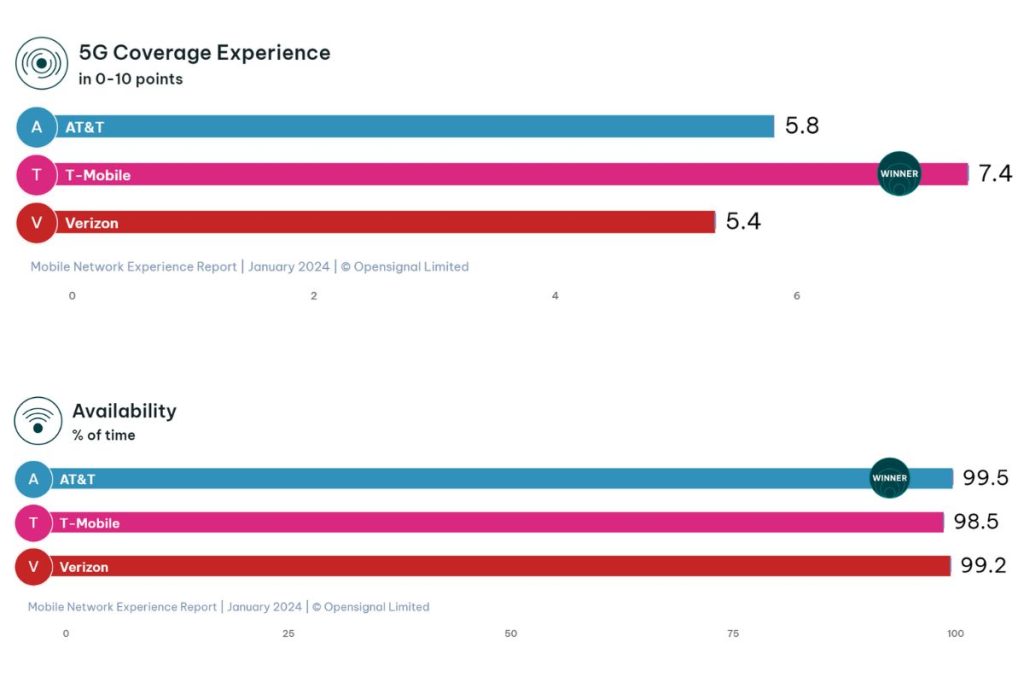
Availability of any connection (2G, 3G, 4G or 5G) is also important. The Opensignal report awarded AT&T with the best Availability score, finding its users were connected 99.5% of the time on average. This narrowly beat out Verizon by 0.2 percentage points, highlighting AT&T’s nationwide network strength.
2. Mobile Internet Speed
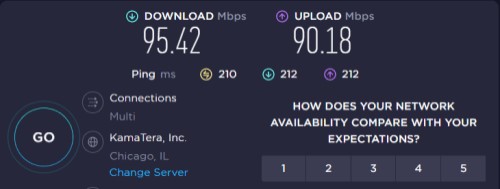
According to Speedtest.net, The United States ranks 12th globally for mobile speeds and 7th for fixed broadband speeds as of January 2024
Among the 100 most populous cities in the U.S. Glendale, Arizona takes the lead with a median mobile download speed of 224.51 Mbps during Q4 2023
When it comes to mobile internet speeds, T-Mobile has established a strong lead according to recent data. However, AT&T is making gains as it utilizes new spectrum holdings.

Opensignal’s January 2024 report analyzed download and upload speeds on the nation’s largest carriers. T-Mobile conquered both overall download and upload speed awards, recording an average download speed of 113.1Mbps. AT&T saw improvements, with its download speed increasing to 45.5Mbps from last report, but this was still over 2.5 times slower than T-Mobile’s speeds.
On a regional level, T-Mobile dominated speed awards across almost every state. The fastest speeds nationwide were on T-Mobile in D.C. at 160.6Mbps download. AT&T users saw the highest average speeds on its network in Illinois at 63.9Mbps.
II. Mobile Internet in the US: Connection Options for Tourists
If travelers want to take avantage of mobile internet in the US, there are four main options: free local wifi, pocket wifi, roaming, local SIM card, eSIM, international plans.
| Mobile Connectivity Option | Pros | Cons | Pricing (Estimate) |
| Free Local WiFi | – No cost | – Limited usage | Free (may be time-limited) |
| Pocket WiFi | – Connects multiple devices | – Requires carrying an additional device (pocket WiFi) | Daily rental fee: approximately $5 – $15 USD |
| Roaming | – Convenient when no other options are available | – High charges, especially for data usage | Data usage charges: around $10 – $20 USD per GB |
| Local SIM Card | – Potentially cost-effective | – Need to change SIM card in each country | SIM card cost: around $10 – $20 USD |
| eSIM | – No need to change physical SIM | – Limited support, requires a newer phone | eSIM cost: typically higher than $10 – $20 USD compared to local SIM |
| International Plans | – Offers global service | – Can be expensive, especially for data | Package or usage-based fees: from $30 USD and up |
Learn more about avoiding roaming charges while traveling in the US:
Opting for a local SIM card when traveling in the United States is often the best choice for several reasons:
- Local SIM cards offer more affordable options than international roaming plans.
- You can steer clear of high roaming costs by using a local SIM card.
- Local carriers provide competitive data packages with larger allowances.
- Choose from various carriers and plans based on your preferences and needs.
- Acquiring and activating a local SIM card is a straightforward process.
esimusa.net
eSIM stands out as the primary and optimal choice for internet connectivity while traveling in the US. It’s easy to buy, activate, and choose plans for travelers.
Moreover, esimusa.net presents a diverse array of eSIM packages tailored for the US. Commencing prices at just $7.9, the packages span up to $20.
III. Mobile Internet Rates in the United States
Explore the spectrum of mobile internet rates in the United States, uncovering diverse plans, pricing, and considerations from major carriers.
| Service | Monthly Price | Included Benefits | Hotspot | Data Allowance |
| T-Mobile Unlimited Plus | $65 (excluding tax) | 5G, Disney+, Walmart+, Apple One (optional), Hotspot with 30GB (on 5G), and unlimited (on 3G) | Yes | 30GB (on 5G), Unlimited (on 3G) |
| Verizon Unlimited Plus | $65 (excluding tax) | 5G, Disney+, Walmart+, Apple One (optional), Hotspot with 30GB (on 5G), and unlimited (on 3G) | Yes | 30GB (on 5G), Unlimited (on 3G) |
| Mint Mobile | Depends on plan | Budget-friendly, note: fewer additional benefits compared to major providers | No | Information not provided |
| AT&T Unlimited Premium | $75 (excluding tax) | HBO Max, 5G, Unlimited Hotspot | Yes | Unlimited |
IV. Best Mobile Operators in the US
Here’s a table summarizing key information about major mobile operators in the United States, including price range, data, and eSIM availability:
| Mobile Operator | Price Range | Data Plans | eSIM Availability |
| Verizon Wireless | $30 – $90 or more | Various plans, including unlimited data | Yes |
| AT&T | $30 – $85 or more | A range of plans with different features | Yes |
| T-Mobile | $30 – $80 or more | Unlimited data plans with different tiers | Yes |
| Sprint (now part of T-Mobile) | $30 – $80 or more | Integrated into T-Mobile’s offerings | Yes |
Get more insights on Mobile Operators in the US - Detailed Comparison
V. FAQs about Mobile Internet in the US
Which are the major mobile carriers in the United States?
Major carriers include Verizon, AT&T and T-Mobile. There are also Mobile Virtual Network Operators (MVNOs) like Mint Mobile that use the networks of major carriers.
What is the difference between 4G and 5G, and does it matter for mobile internet?
5G is the next-generation mobile network with faster speeds and lower latency compared to 4G. While 4G is widely available, 5G is expanding. The choice depends on your location and the device’s compatibility.
How can I find out about coverage in my area before choosing a mobile internet plan?
Check the coverage maps provided by each carrier on their websites or use third-party tools to assess network coverage in your specific location.
Can I use a mobile hotspot for internet access, and how much data do I need?
Yes, mobile hotspots are available. The amount of data you need depends on your usage habits, such as streaming, browsing, and working online. Consider your typical data usage when selecting a plan.
VI. Conclusions
In summary, choosing the best mobile internet option in the United States involves considering factors like coverage, data, and emerging technologies. For tourists, opting for local SIM cards and eSIMs is recommended for a cost-effective and seamless connectivity experience.

